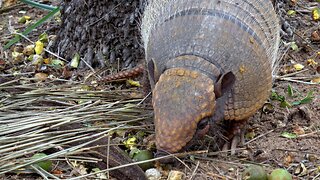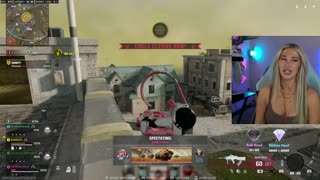Premium Only Content

Molecular robots work cooperatively in swarms Under UV Light
I believe this is what the UV/ Black light street lamps are all about!!!
They are trying to change us with light and frequencies!!
Studying Azobenzene-Modified DNA for Programmable Nanoparticle Assembly and Nucleic Acid Detection
DNA Nanostructures on Membranes as Tools for Synthetic Biology
https://www.cell.com/action/showPdf?pii=S0006-3495%2816%2930065-0
Azobenzene-Based Cross-Linked Small-Molecule Vesicles for Precise Oxidative Damage Treatments Featuring Controlled and Prompt Molecular Release
https://pubs.acs.org/doi/10.1021/acs.chemmater.1c01860
Conformational changes of DNA induced by a trans-azobenzene derivative via non-covalent interactions
https://pubs.rsc.org/en/content/articlelanding/2018/cp/c8cp03836h
A Light-Driven DNA Nanomachine for the Efficient Photoswitching of RNA Digestion
https://onlinelibrary.wiley.com/doi/10.1002/anie.200907082
Journal of Biomedical Nanotechnology
Light-regulated host–guest interaction as a new strategy for intracellular PEG-detachable polyplexes to facilitate nuclear entry
https://pubs.rsc.org/en/Content/ArticleLanding/2012/CC/C2CC34768G
Conformational Switching of G-Quadruplex DNA by Photoregulation
https://onlinelibrary.wiley.com/doi/abs/10.1002/anie.201002290
Photoregulated DNA Rotary System
https://www.chemistryviews.org/details/ezine/10501617/Photoregulated_DNA_Rotary_System.html
A Photoregulated DNA-Based Rotary System and Direct Observation of Its Rotational Movement
https://chemistry-europe.onlinelibrary.wiley.com/doi/10.1002/chem.201605616
In a global first, scientists have demonstrated that molecular robots are able to accomplish cargo delivery by employing a strategy of swarming, achieving a transport efficiency five times greater than that of single robots.
Swarm robotics is a new discipline, inspired by the cooperative behavior of living organisms, that focuses on the fabrication of robots and their utilization in swarms to accomplish complex tasks. A swarm is an orderly collective behavior of multiple individuals.
Macro-scale swarm robots have been developed and employed for a variety of applications, such as transporting and accumulating cargo, forming shapes, and building complex structures.
A team of researchers, led by Dr. Mousumi Akter and Associate Professor Akira Kakugo from the Faculty of Science at Hokkaido University,
has succeeded in developing the world's first working micro-sized machines utilizing the advantages of swarming.
The findings were published in the journal Science Robotics
("Cooperative cargo transportation by a swarm of molecular machines").
A swarm of cooperating robots gains a number of characteristics which are not found in individual robots—they can divide a workload,
respond to risks, and even create complex structures in response to changes in the environment.
Microrobots and machines at the micro- and nano-scale have very few practical applications due to their size; if they could cooperate in swarms, their potential uses would increase massively.
The team constructed about five million single molecular machines. These machines were composed of two biological components: microtubules linked to DNA,
Recruiting a microtubule-binding complex to DNA directs chromosome segregation in budding yeast
https://www.ncbi.nlm.nih.gov/pmc/articles/PMC2752306/
Binding of microtubule protein to DNA and chromatin: possibility of simultaneous linkage of microtubule to nucleic acid and assembly of the microtubule structure
https://www.ncbi.nlm.nih.gov/pmc/articles/PMC326720/pdf/nar00397-0148.pdf
which allowed them to swarm; and kinesin, which were actuators capable of transporting the microtubules.
The DNA was combined with a light-sensitive compound called azobenzene
Azobenzene | C12H10N2 - PubChem
https://pubchem.ncbi.nlm.nih.gov/compound/azobenzene
that functioned as a sensor,
allowing for control of swarming.
When exposed to visible light, changes in the structure of azobenzene caused the DNA to form double strands and led to the microtubules forming swarms.
Exposure to UV light reversed this process.
The cargo used in the experiments consisted of polystyrene beads of diameters ranging from micrometers to tens of micrometers.
These beads were treated with azobenzene-linked DNA; thus, the cargo was loaded when exposed to visible light and unloaded when exposed to UV light. However,
the DNA and azobenzene used in the molecular machines and the cargo were different, so swarming could be controlled independently of cargo-loading.
Single machines are able to load and transport polystyrene beads up to 3 micrometers in diameter,
whereas swarms of machines could transport cargo as large as 30 micrometers in diameter.
Furthermore,
a comparison of transport distance and transport volume showed that the swarms were up to five times more efficient at transport compared to the single machines.
original link by Hokkaido Uni
-
 10:46
10:46
Watchman's Duty
2 days agoPeople are Discovering Shocking Pricing Tricks at Wal-Mart
7845 -
 23:31
23:31
IsaacButterfield
13 hours agoThe Woke Mob Is Really CANCELLING Matt Rife For THIS…
2.83K6 -
 1:23
1:23
WildCreatures
8 days ago $0.90 earnedThis mother armadillo eating her palm nuts is truly adorable
3.82K9 -
 8:59
8:59
The Art of Improvement
9 hours agoHow to Build the Most Powerful Mindset for Success
2.2K -
 LIVE
LIVE
GritsGG
1 day ago36 Hour Stream! Most Wins 3420+ 🧠
991 watching -
 1:26:16
1:26:16
Michael Franzese
18 hours agoMenendez Brothers Denied Parole – Newsom Holds Their Fate
112K79 -
 2:36:02
2:36:02
I_Came_With_Fire_Podcast
17 hours agoSecret Origins of Transhumanism & The New Atlantis
34.8K16 -
 LIVE
LIVE
sophiesnazz
3 hours ago $0.03 earnedLETS TALK ABOUT BO7 !socials !specs
55 watching -
 3:01:44
3:01:44
MadHouseRetro
3 hours agoPUFFCO PIVIOT BUNDLE GIVEAWAY! and Spider-man 2 playthough!
12.6K1 -
 1:12:40
1:12:40
Wendy Bell Radio
13 hours agoPet Talk With The Pet Doc
67.8K33